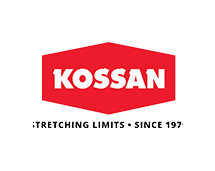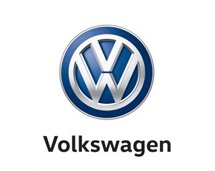MALAYSIA ECOMMERCE DEVELOPER
PERFORMANCE DRIVEN ECOMMERCE
eCommerce Development.
Our web developers are no strangers to the overwhelming growth of eCommerce tools and services. We help you to create an online store that functions as smooth as any excellent customer service procedure should as an e commerce in Malaysia. Most importantly, we make sure your eCommerce website is secured.
Responsive eCommerce.
Shopping has never been made easier on every device. Our web designers are adept at creating designs that represent your business as a Malaysia online shopping website in a way that looks great in all screen sizes. We work our way through to create an online shopping experience an enjoyable one no matter what device is used.
Digital Marketing Plan.
Developing an e Commerce website also means you’ll be needing to invest in a good digital marketing plan to direct customers to visit your site. We’re experts in using web tools to navigate through your business and complete your goals. With a bespoke digital marketing plan, we can show you how to get the most out of your eCommerce store.
eCommerce SEO.
As an e commerce company in Malaysia, we help you create create e Commerce websites that are SEO friendly as it is our job as a website company in Malaysia. Our SEO services integrate keywords and terms that have high relations to your business products and services to provide a ranking boost. We optimize your website pages in accordance with its overall design to give you a website worth spending on.
Site Integration.
A great e Commerce website is integrated with the right software used by many of your customers to make shopping much easier online. From product shipments to order processing, we as a web developer and design company in Malaysia are well versed in implementing the necessary key operational software into your e commerce sites in Malaysia for seamless user experience.
Insights & Analytics.
We utilize web analytics tools that help us to discover new opportunities lying hidden within the digital market. With the right analytic plan at hand, we can accelerate the growth of your online store and help you to understand your customers even better. We utilize data collected from customer interactions to show you how your eCommerce business can improve even more.
MAKE ONLINE SHOPPING HUMAN AGAIN
To ensure that you have what you need for the best possibility of success, we have created a checklist with the essential guidelines on what is necessary to create website Malaysia that is significant to the Malaysian market. We made up of some experts in website design Malaysia will do it based on what we’ve learned from the top ecommerce website builder Malaysia combined with leading eCommerce developers.
1. Planning your eCommerce store
Know What You Will Be Selling
Deciding what you will be selling on your eCommerce store is the first step to success. You can sell almost anything of your own, from an individual product to a wide selection of products, or even provide a service. To ensure that your products can be sold successfully, it is best to research on the product and its background before you start selling them.
Identify Your Business Model
Find out whether your products will be made yourself, or whether it is sourced and imported from an external third party supplier. How would you compete with the others on the quality of your products and its price? How do you know which of your products would produce the most significant amount of profit margin? Do you offer other customer services such as express shipping, warranty, or money-back guarantee? Understanding your business thoroughly adds to a higher chance of making your eCommerce store successful when the right practice is followed.
Identify your Target Market
Before setting up an eCommerce store, you’ll need to be able to learn and understand whether your product would catch the interest of the market and if they would buy it. There are lots of free tools available to help you research the market, such as Google Adwords Keyword Tool, a tool that will collect data on the number of people who has searched for a specific term related product in each given month, in a general sense, provides you the ability to gain insight on the general demand required for your business.
Choose your Business Legals
Upon completing selecting your list of products to sell, your business model, and your target market, the next step is to set up your business information. Details such as your store name and company name are part of the required procedures in setting up your new eCommerce business as a company that is both professional and legal in order to prevent the possibilities of a lawsuit. To effectively manage the finances of your business from the start of your launch, keep your merchant bank account separated from your personal account by setting up a new one just for your business.
Come Up With Your eCommerce Policies
Before getting your eCommerce business running, you’ll also need to wrap up the plan by deciding on what your store policies are. This can include policies such as the number of days given as for returns on unwanted or damaged items, if international shipping is available, the pricing structures for shipping, etc.
Keep your inventory or stock items in check with a management system, especially during an event where a customer orders something that is unavailable. Furthermore, specify in your privacy policy on your website especially if you’re planning on selling your customer’s information to other third-party companies. Including precautions during the early stages of planning prevents unwanted downsides along the way, especially in situations that involve legal actions.
2. Set Up a Checklist
Choose your Desired Domain Name and Hosting Service
An essential part of any website is its domain name and hosting service. When deciding on a domain name, it should be easy to spell, read, and most importantly, reflects on your store name. This is to ensure that your visitors would be able to search for your website without troubles. Try to avoid a domain name with an odd combination of strange words or spellings, symbols, or numbers as these can be a hassle for users to type into the search bar.
Part of your eCommerce website to make it up and running is by using a hosting service. Usually, website design agencies would offer to help you manage your hosting, but you could also choose a web hosting service of your choice and manage your eCommerce site by yourself. When it comes to pricing and flexibility, managing the hosting yourself is generally cheaper and may be a better option to a majority of users. However, be wary of ridiculously cheap hosting services as these types often include other shared servers that would impact the loading speed of your website as well as reduce the effectiveness of your SEO.
Choose the Right Phone Policy and System
When customers would like to inquire about your services or products via phone call, you’ll need to decide on a phone policy whereby your customers are able to directly contact your business. Factors such as phone call assistance are made international, if it is only set to a specific set amount of time during the day, or if it is available on a 24-hour basis. You can also opt for strictly using emails or online chats for inquiries instead of a phone. But this would decrease your customer service levels, yet would also make things easier for you to manage. Weigh your options and decide which of these plans would best suit your online business and would be beneficial for your customers.
Decide Where Inventory Will be Stored
Stocks purchased from a third party distributor/supplier would need to be arranged in a form of a storage center. Keep in mind to plan ahead on how your business would grow in the future and how your options now on where to store your inventory would scale before deciding on how much storage space you may need.
Drop-Shipping
If you’re not keen on getting a storage space, an alternative option would be drop-shipping, whereby the stock would only be ordered from your third party distributor/supplier when an order is made through your eCommerce website. From there, the item ordered from the supplier will be shipped directly to the customer. With drop-shipping, you wouldn’t need to add inventory plans on your list as you won’t be needing to hold your own stock. This option is more cost-effective and quite useful, especially for small businesses. Seasonal apparel, items, or trends are often ordered through drop-shipping as having too much of these stocks at hand could quickly go out of interest within a period of time.
Start Setting Up An Independent Merchant Account and Business Bank Account
All businesses are advised to create a new bank account registered under the business’ name and must solely be dedicated only for their business. As running a business involves various tax and accounting factors, personal and business bank accounts must never be mixed together. It is best to segment all business expenses and earnings from the start as doing so can provide a critical benefit for a successful business.
An independent merchant account will be needed when accepting online payments for processing. There are many institutions you can add to your eCommerce site, so find one with the best deals and has a charging fee that is acceptable to your business plan. Payment institutions like PayPal offers a full-service payment transaction solution but with a deduction of a certain percentage of fees with every transaction made from your eCommerce store.
Decide on a Pricing Model
Once a majority of your site planning has been decided, you’ll need to decide on the prices of your goods and services. While there is no correct formula for you to refer to, however, a new business should set their minimum goal to break even – whereby, a business should plan to gain enough profits for sale to pay for the cost of the expenses, stocks, and marketing fees that were incurred.
On the other hand, if your business model involves holding your price at a competitive level within the market, you may find yourself at a state where a few of your product sales would be facing a loss. Even so, placing some of your products at a ‘high margin’ could increase the chances for profit as the profit that was made from the product is significantly higher than the cost of which it was purchased for from the supplier.
Once your eCommerce site is up and running publically, learn to experiment with your prices to observe what your customers would be willing to spend without worrying if it would affect the number of sales.
3. Details about your Website
The Flow of your Web Design
The design of your eCommerce website represents your business like a storefront. Even though incorporating an aesthetic design is incredibly important, having a good structural flow that promotes a logical action path is vital when it comes to conversion. Keep your contact details and store policies visible and easily accessible. This includes highlighting certain crucial details of your policy such as product returns or free shipping services that would catch the eye of your customers to prompt them to complete the purchase. Regularly consult your website designer as well on how to increase the conversion rates on your eCommerce store and enhance the interface of your site for maximized user experience.
Choosing a Suitable Website Software Platform
Have a website design ideas at hand of how you want your eCommerce website to provide your services when choosing a web design company that will be developing your site. They will help you identify the basic requirements of an online business store and give recommendations on its functionality. Start by choosing a Content Management System (CMS) platform, a tool that will help you in editing the contents of your website as well as provide an easy management process for your products. With a CMS platform, you would not need to rely on a web design company to help you as this would add to an extra list of charges.
Keep your website mobile friendly by ensuring that your website design is responsive. This allows your site to be able to scale and size its visual elements accordingly no matter the resolution of the device. Make certain that elements that involve transactions like checkout buttons are visible and usable, especially on mobile devices.
Writing Descriptions for Your Products & Services
Products displayed on your website should have creative descriptions and images capable of attracting your customer’s attention. As what you sell and how you describe is one of the leading factors to your store’s success, you’ll need to present your products on your site in a way that you would in a physical store – neat, presentable, with enough details that would keep the customer informed. Use your own images taken at a high quality instead of using stock images, and provide a description with the relevant details, such as weight, color, measurement, or material type.
Obtain an SSL Certificate
The reason behind the need for an SSL Certificate for your eCommerce store is to encrypt areas in your website that collects personal data from your users. With this, third-party websites and scammers will be prevented from collecting these explicit data, such as your customer’s credit card information and taking advantage of them. It is necessary for all eCommerce businesses to incorporate SSL Certificates into their website, and you can begin searching for one by scaling through various SSL vendors and their best prices.
Create a Privacy Policy for Your eCommerce Store
Explicit information like personal customer details and credit card information are usually collected upon registration or during checkout, therefore it is vital that you create your store’s privacy policy to state how you will be using and storing your customer data as a form of a binding contract between your website and your visitors. Having a privacy policy provides reassurance to users who are afraid of sharing their personal data online for fear that they would be sold to third-party vendors, used for unconsented marketing plans that lead to spam or frauds.
Devise a Marketing Plan
Upon getting your eCommerce store live and running, you’ll need to devise a plan on gaining website visitors. Search Engine Optimisation (SEO) is a crucial web traffic tool that will get your website to appear as one of the top search results based on relevant keywords that are related to your product and business. Internet marketing comes in several options to choose from, including Pay-Per-Click (PPC) advertising where your website is marketed as an ad. When your ad is clicked, you will be charged a fee for that visitor. Incorporating SEO is a great long-term strategy to invest in, but if you’re looking for a more cost-effective method to render visitor traffic, PPC is a great solution for a new business.
Utilize Analytics Measurement
Web analytics is an incredibly powerful tool that is often undervalued when it comes to website management planning. Free web analytics such as Google Analytics will help you to monitor the number of visitors using your website with information like what pages they have interacted with, the time spent on a page, and what products are forecasted to sell better. Not only that, with analytics, you can also track the outcome of certain marketing strategies used and its effect on sales, aiding in you in making decisions on where to spend on future marketing investments. You can request from your eCommerce website developer to keep your website analytics tracked from day one of your website launch by installing the code into the site for you.
4. Managing your Sales
Create an Information Page
Before customers begin purchasing, a number of questions would surface in their minds on basic queries like shipping, stock, sizes, and payment options. Save both your customers and your time by creating a space for frequently asked questions (FAQ) on your website. You may also provide your customers several other options to cater their questions by adding a customer service center or direct contact for any incoming requests.
Provide a Choice of Offered Payment Methods
Decide a few payment options to allow your customers to complete a purchase from your eCommerce store. At most, credit card payments are one of the most common and a popular choice of payment as they make checkouts fast and instant. Shipment can be made immediately once a transaction is completed. However, it is often recommended to add an alternative payment method in favor of your customers, such as using wire transfers or cash on delivery. Understand the implications of each payment options before deciding which methods to offer on your site.
Managing International Orders
International orders would require an appropriate process planned out as overseas shipping and purchases vary from country to country. International shipping is often more expensive and as considered as an additional cost factor, especially when you’re looking to expand your business internationally. Take note that there may be some countries where your product isn’t allowed to be shipped as there are custom rules on what is allowed to be imported and exported. To prevent the possibilities of a heavy hassle, have a shipping policy in check for each country.
Managing Unsatisfied Customers
Unsatisfied customers are unavoidable in every kind of business. While they are inevitable, you can still reduce or avoid conflict at any given chance that provides the best end result. To minimize the number of unsatisfied customers, ensure that your products and services contain as much relevant information as possible, including order updates, payment confirmation, tracking number, and so forth. Keep your policies easily visible and have your store and shipping policies written in a way that is easily understandable and straightforward.
It is always a good practice to keep a checklist at hand to remind yourself of a plan that you need to follow when it comes to getting your eCommerce site to be successful. If you’re in need of an eCommerce website of your own with a personal touch, drop us a message at any time of the day to get a free quote.
We’re good at making beautiful and functional websites, but we’re better creating an online store made just for your needs. Our years of eCommerce experience has led us to help hundreds of customers to expand their business with one common powerful solution.
Malaysia eCommerce Web Design
A Malaysia eCommerce website is a medium for visual representation of a business and its brand hence, we as one of the top web design company Malaysia maximize our creative capabilities. At Sterrific Agency, we’re recognized for our modern and elegant eCommerce web design Malaysia locally, made to optimized across a variety of different mediums, devices and channels, with the primary goal to deliver our customer’s objectives with each new eCommerce project we can get our hands on. Our team of web designers are specialized in developing the design blueprint of various e Commerce platform Malaysia including cutting-edge or UX-focused pages, and responsive interfaces. When working together with our clients, our web design Malaysia team dedicates their time and responsibility towards forming a rich working relationship in order for us to ensure that what we create turns your brand and business into a digital eCommerce reality.
Malaysia eCommerce Strategy
Regardless if you are launching a new eCommerce website, redesigning one, or seeking to update the prospects of your online space, you’ll need a design agency Malaysia specialized in eCommerce to help you build your business until its full potential. We are aware that eCommerce websites have one common goal, whereby business needs to be generated while boosting brand awareness at the same time. As one of the leading creative agency Malaysia working with eCommerce services, we prioritize the need to develop an eCommerce strategy for all of our clients. We provide the necessary support in strategic planning when it comes to launching an eCommerce website, hence we abide by the best practices given to us in terms of responsive web design and development. That is why the websites that we create are designed to bring profit to all retail channels while simultaneously showcase a brand’s look and feel that engage interest into your customers with what they would love to see.
ECommerce Services
- ECommerce Development
- Custom ECommerce Functions
- Shopping Cart
- Geolocation Delivery Calculator
- WooCommerce Development
- Magento Development
- Flexible Discount Rules
- ECommerce Web Design
- Social Media Integration
- Payment Gateway Integration
- CRM and ERP Software
- POS Software Integration
- GST and SST Tax Calculator
- Email Marketing Software
- Product Ratings and Reviews
- iPay88, Molpay & Paypal
- Reward Point System
- Affiliate Marketing
- Event and Calendar Booking
- WPBakery Page Builder
- Social Media Integration
- Email Newsletter Subscription
- Customer Membership
- Instagram Feed ECommerce
- Custom Cost Estimation
- ECommerce Wallet
- Customer Relationship Management
- ECommerce Sales Analytics
- Login/Signup by Social Media
- Custom Delivery Rate by State
We are the Phineas & Ferb in the agency who invent cutting-edge e-commerce site from scratch away from the cliche.
ECommerce that drives performance and gets you results.
















eCommerce Development Process
An eCommerce site can transform your business into the digital storefront that you need to expand your brand. However, owning a website is not just for vanity. The advantages of owning an eCommerce website can be astounding, but we’re here as a web design agency Malaysia to help you get it running smoothly.
1. Goals and Research
While eCommerce websites share a common goal, not all of them provides the same services or products. We want to get to know more about you and your goals for your eCommerce website. Not just that, we’ll also be conducting research on your surrounding competition and your customers to make sure we provide an eCommerce solution tailored just for you.
2. Creating an eCommerce Plan
An eCommerce plan is developed based on the insights obtained based on the research conducted. At this stage, we include various critical points to determine the sort of online web services, marketing plans, and analytic tools to be integrated into the eCommerce website based on the goals that were set previously.
3. Mockups & Wireframes Designs
Designs for your eCommerce website will be constructed in accordance with your vision and website design ideas. Our web designers are made to create neat wireframe designs and produce mockups that would showcase your brand in a way that represents its identity. We create designs that we know will help your business gain the spotlight that it needs.
4. eCommerce Web Development
Once the final mockup is approved, our team of experts in web development Malaysia will begin developing your eCommerce website. We ensure that both the designs and functionalities of your website work well with each other that would ensure that your customers will receive a pleasant browsing experience.
5. Integration
An eCommerce store isn’t complete without services that would assist in turning online shopping into a breeze. We integrate the necessary components needed to make services, such as order processing and shipping, easier for the customer and easier for you to deliver.
6. Test
Before your eCommerce store is launched, we run numerous tests to ensure that all design elements and functionalities are presented the way they should be. We want your eCommerce website to provide a great first impression to your customers upon their visit, and we make sure that they enjoy their experience browsing through too.
Phone


How Can We Help?
We craft beautiful and unique digital experiences. With more than 10 years of knowledge and expertise we design and code clean websites and apps, we build brands and help them succeed!



